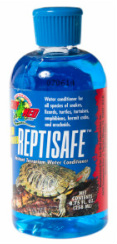Pet Information: Reptiles
Below you'll find general information that applies to all reptiles. You can find specific information for different types of reptiles by following these links:
|
I use Groupon and love it, but I do not endorse the individual deals shown.
|
Click here to make a website of your own!
I use iPage to host my website, and I am very happy with the service. The Weebly Drag and Drop Site Builder lets me create custom pages with no experience, and the support staff is helpful and patient. Hosting at iPage is affordable, even with the upgrade that allows me to create and display unlimited pages with their site builder software.
Disclosure: I do receive payment if you open an iPage account by following this link. The iPage Affiliate program allows me to earn money through referrals, which I use to develop and post the educational resources on this site free of charge. |
|
Please let me know how you used these resources; if they were used in the classroom to help cover State Standards, if they were used at home, or if they were used in another setting. I welcome any other constructive feedback or ways you adapted them to meet your needs, responses do not need to be long to be helpful.
|
 Pet Information - Reptiles by Caitlin Kempski is licensed under a Creative Commons Attribution-NonCommercial-ShareAlike 3.0 Unported License. This license means that you can remix, tweak, and build upon my work non-commercially, as long as you credit me and license any new creations under these identical terms.
The above information is intended to be a resource for educators and can be used freely, so long as I am credited and you are not selling it in any way. Handing it out to students of any age as is or in an edited form is acceptable and encouraged, just include the link to this webpage and identify it as your source. If you post it on your website, be it personal or school affiliated, it must also be credited to me and grant people identical terms of use. Thank you for your cooperation and please email me with any questions at bycaitlin@gmail.com. License terms can be found here http://creativecommons.org/licenses/by-nc-sa/3.0/ |

